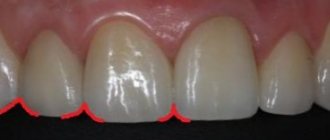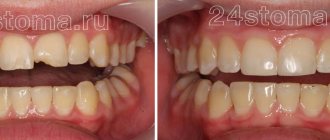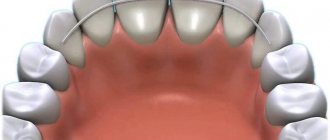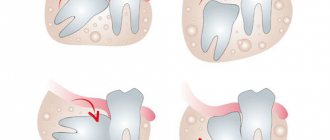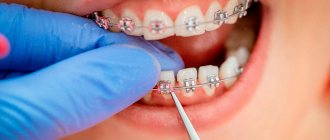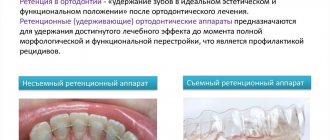10825
Teeth filing technology has been used in dental practice since the beginning of the 19th century. At that time, this procedure was used as a preservative during the treatment of caries.
With the improvement of therapy methods and the expansion of the list of instruments used, this treatment technology was abandoned, however, in some situations, filing is still used.
Indications
There are opposing opinions among dentists regarding the procedure, but there are situations in which filing is necessary:
- When installing crowns. For reliable fixation of the crown, it must fit tightly to the tooth surface.
Since the anatomical shape of each molar or incisor is not ideal, grinding down of the upper layers of their hard tissue is required. This allows you to give your own bone organ the correct geometric shape, thanks to which the manufactured product is firmly fixed and does not stand out among other elements of the jaw row. - For fixing veneers. Ceramic plates fixed to the surface of your own teeth have a certain thickness.
Therefore, in order for the installed microprostheses to fit firmly and not protrude beyond the boundaries of the native units, a small amount of hard tissue is ground off from the vestibular side of the elements of the jaw row. - Preparation for inlays. If it is necessary to mask the cavity formed as a result of carious lesions, ceramic or metal inlays can be used.
Their fixation requires the creation of side walls and the formation of the required depth near the cavity. - In case of installation of an orthodontic structure. Cutting down a small thickness of the top layer of the tooth allows you to make room for correcting the position of the remaining elements of the row without the need to remove them.
In addition, this option is often used in cases of increased crowding of teeth, since it facilitates the placement of fastening elements of the bracket system on them. - If there is damage to the enamel. Chips on the surface of the front incisors can be made less noticeable by slightly filing down the enamel.
This improves the aesthetics of the appearance of the jaw row and eliminates the need for composite restoration. - In case of elongated incisors. If the front teeth are longer than the rest of the row, this can not only cause psychological discomfort, but also interfere with correct diction or complete chewing of food.
To solve the problem, in some cases, filing the length of organs protruding from the common line is used. - At sharp angles. The anatomical structure of the anterior incisors is not always ideal. If there are sharp corners, dentists may recommend filing them down, which will increase the aesthetic appearance of the entire jaw row.
Indications for the use of orthoimplants and tactics for their installation.
Let's discuss here how the braces system works.
At this address https://orto-info.ru/ortodonticheskoe-lechenie/podgotovitelnyiy-period/separatsiya-zubov.html we will talk about abrasive teeth separation.
Why do teeth grow at random?
Malocclusions are often caused by heredity. If parents have certain defects in the dental system, we can guess what dental problems their child will face. However, some systemic diseases, injuries, and improper oral care in childhood also lead to crooked teeth.
The main reasons why adult teeth are positioned incorrectly:
1.Underdevelopment of the dental system
Oddly enough, this is a problem of the accelerated development of civilization and the inability of the human body to adapt so quickly to a new environment. We began to eat freeze-dried food, which does not contribute to the development of the dental system. Genetically, the number of teeth remains the same, but the jaws do not receive the proper load and remain underdeveloped. As a result, teeth grow crowded and become crooked.
2.Premature tooth loss
If a baby tooth is removed before its due date, neighboring teeth tend to take its place, and the dentition is formed incorrectly. Further correction requires considerable time and financial costs. However, the problem concerns not only milk teeth, but also permanent teeth. Injuries sustained in adulthood can cause serious abnormalities. The long-term absence of one or more dental units leads to irreversible consequences: neighboring teeth are displaced, the bite is disrupted.
3. Problematic wisdom teeth
In addition to the fact that the eights themselves can grow crookedly, they contribute to the crowding of the remaining teeth. There is not enough space in the dentition for their full growth; from the moment they erupt, they harm neighboring teeth.
If you are embarrassed about your smile, contact an orthodontist - the problem can be solved.
Contraindications
The necessity and admissibility of filing teeth is determined by the dentist individually in each case, since the procedure is quite labor-intensive and can be traumatic in some situations.
For this reason, sewing hard fabric is contraindicated in the following situations:
- increased abrasion of enamel;
- hyperesthesia;
- bruxism;
- presence of bad habits - frequent chewing of seeds and nuts, opening bottles with teeth;
- high risk of injury to the incisors, for example, boxing and other types of wrestling.
Cost of treatment
The cost of straightening teeth without braces depends on the method chosen. But in any case, aligners and trainers, not to mention veneers and composite restorations, cost much less than any bracket system. Moreover, the difference becomes very significant if we compare lingual or sapphire structures with orthodontic aligners.
In many dental clinics, during the initial consultation and examination, the doctor creates a virtual 3D setup, which allows you to immediately calculate the required number of trays, and with it the final cost of treatment.
In addition, patients should consider the cost of preparatory measures, which include professional cleaning and sanitation of the oral cavity, as well as diagnostic procedures such as x-rays.
Technique
The procedure for filing teeth is carried out in several stages:
- Preparation. At the first meeting, the dentist assesses the condition of the patient’s jawbone elements, determines whether there is a need for cutting down hard tissue and whether there are contraindications to the procedure.
- Identifying problem areas. Using carbon paper, a liquid aerosol or a wax plate, the dentist determines the overestimated areas of the tooth. Areas that require sanding will be colored more intensely.
- Sawing. The filing procedure may vary slightly depending on the goal to be achieved and the shape of the tooth being processed.
So, when treating chewing molars, the dentist carefully grinds off the top layer of enamel from the surface of the tubercles. When cutting down the front incisors, multidirectional movements are carried out.
In some cases, it may be necessary to preliminary make a diagnostic model based on casts of the patient’s jaw rows.
The resulting gypsum sample is subjected to careful inspection and evaluation filing. Carborundum cutters or diamond burs are used as instruments for the operation
The procedure often ends with polishing and remineralization of the treated units. The dentist applies a certain composition containing a complex of useful substances to the enamel to increase the strength of the outer layer of the tooth and reduce permeability .
What are the alternatives to teeth straightening?
Filing is a violation of the integrity of the tooth, so in the future it is possible to increase tissue sensitivity. If the patient has minor cosmetic defects (for example, incisors of different heights), orthodontic treatment can be done without drilling. Before straightening your teeth, you need to consider all correction options: mouthguards, trainers, braces, aligners, and also compare the prices of teeth filing and orthodontic bite correction.
Based on: 5 votes
Increased sensitivity after the procedure
Many patients who have had their teeth filed complain of increased sensitivity, especially when eating hot and cold dishes and hard foods.
Dentists explain this phenomenon as follows. Dentin, located under the enamel, is penetrated by many tubules, inside of which nerve endings are located. As the thickness of the enamel decreases, pressure changes occur, which can cause pain when taking certain foods.
To reduce tooth sensitivity after the procedure, dentists recommend temporarily avoiding too hard foods, dishes with high and low temperatures, and acidic drinks.
During oral hygiene, you should use a brush with soft bristles and therapeutic and prophylactic toothpaste, rinses for sensitive teeth.
If sensitivity does not disappear a week after filing, you should contact your dentist.
Indications and contraindications for orthognathic surgery, recovery time.
In this article we will tell you how to install braces on crowns.
Follow the link https://orto-info.ru/ortodonticheskoe-lechenie/podgotovitelnyiy-period/informativnost-telerentgenogrammyi.html if you are interested in the importance of a teleroentgenogram in orthodontics.
Signs of correct bite
Normally, the jaws make close contact when closing. In this case, the upper teeth cover the lower ones by about a third, so that the palatal tubercles of the former touch the incisors of the latter. There are no gaps between them both when the mouth is closed and during chewing. The facial proportions are symmetrical.
Also among the characteristic features:
- absence of speech defects;
- no clicking or other similar discomfort in the joint;
- ease of biting food.
And vice versa, if problems are observed in any of the points just listed, this is an alarm bell and a reason to consult an orthodontist, and immediately, without waiting for the situation to worsen.
At home
Fear of doctors and thoughts about the pain of professional manipulations often lead to patients trying to cope with the existing problem on their own. Teeth filing is also no exception.
Dentists share their experience that people often come to appointments whose enamel has been severely damaged by attempts to cut off part of it with various improvised tools in the desire to improve the aesthetic appearance of the jaw row with prominent front teeth or the presence of chips.
In addition to the problem of high sensitivity, these patients experience cracks in the hard tissue, as well as dentin damage, which develops as a result of bacteria entering the dentinal tubules through open pores.
The consequence of such independent actions can be the development of caries, pulpitis and numerous complications that can lead to partial or complete tooth destruction.
Dentists categorically prohibit performing teeth filing procedures at home. Only a specialist can determine the need for an operation to remove a section of enamel and carry it out efficiently, without the risk of complications.
Types of malocclusion
- open - the teeth either do not close at all, or a significant gap is visible between many of them;
- deep – the exact opposite situation, that is, there is an overlap of approximately half the length;
- mesial – the lower jaw, compared to the upper, is moved forward;
- distal – the problem is the opposite of the previous one;
- cross - the right and left sides protrude unevenly, the cutting edges close together.
Other anomalies include:
- diastema - a gap between the front pair of incisors;
- three - noticeable gaps between “neighbors” along the gum;
- twisting - creeping of sixes, fours, fives onto each other;
- transposition - eruption in the wrong places, right up to the palate.
Any of them is not just inconvenient or bad from an aesthetic point of view, but can also provoke the emergence and development of a number of diseases. It develops against the background of genetic abnormalities and heredity, appears due to injuries and loss of bone tissue.
Price
The cost of filing teeth depends on the reasons for which it is carried out and what result is needed to achieve:
- preparation for caries - from 200 to 350 rubles per row element;
- treatment of enamel after removing braces – 550-650 rubles;
- identification of traumatic occlusion and grinding of one tooth – 200-300 rubles;
- cutting down a tooth for a crown – 130-200 rubles;
- filing a molar under an orthodontic structure – 150-200 rubles.
Find out how teeth are prepared in the video.
Stages of dental destruction: when are consultation and diagnosis necessary?
By degree of destruction:
- Stage 1: there is a smooth smoothing of the tubercles on the enamel and the cutting edges of the teeth;
- Stage 2: tooth enamel is completely erased, the destruction process reaches dentin (the inner part of the tooth);
- Stage 3: the size of the part of the tooth located above the gum and clearly visible is only two-thirds of the norm;
- Stage 4: the crown of the tooth is completely destroyed and falls to the level of the gum.
Due to increased abrasion, the most unimaginable patterns may appear on the surface of tooth enamel, indicating damage to the enamel in the vertical, horizontal directions, in the form of dots, etc.
- Promotion
Dental treatment under anesthesia
Promotion for sedation in Moscow!
If you experience: — Severe stress during dental treatment — Fear of the sound of dental instruments — Time-limited visits to the dentist
old price
12 000 ₽
price
5 900 ₽
Free consultation RUB 5,900 for 30 minutes
Limited offer. Sign up for a free consultation. There are contraindications, consultation with a specialist is required.
- Promotion
Teeth whitening ZOOM
Promotion for teeth whitening in Moscow!
As a gift: - Prof. Oral hygiene – Whitening care set with individual trays
old price
40 000 ₽
price
19 900 ₽
Free consultation Sign up for a free consultation. There are contraindications, consultation with a specialist is required.
